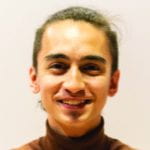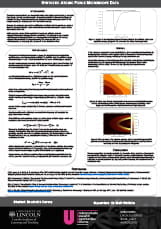by Broderick Harvey //
 Atomic force microscopy has been a highly involved technique in analysing (crystalline) surfaces at an atomic level (in the order of a few ångströms, or roughly 10-10m, which is a few 10-billionths of a metre). However, the calibration of atomic force microscope tips is a seemingly unsystematic process and often relatively random when used for atomic-scale engineering. In other words, a consistent and reliable method is absolutely fundamental for the calibration of these instruments.
Atomic force microscopy has been a highly involved technique in analysing (crystalline) surfaces at an atomic level (in the order of a few ångströms, or roughly 10-10m, which is a few 10-billionths of a metre). However, the calibration of atomic force microscope tips is a seemingly unsystematic process and often relatively random when used for atomic-scale engineering. In other words, a consistent and reliable method is absolutely fundamental for the calibration of these instruments.
The aim of this research is to provide a consistent and coherent method of producing a frequency (contour) map and thus improve calibration technique. The frequency map provides an accurate representation of the forces acting upon the tip, which allows one to deduce properties regarding the structure of some crystalline material at an atomic level. In modelling this tip, contact mode has been assumed (the tip contacts the surface).
The first step was to establish the tip’s motion clearly. One can assume the cantilever tip is a simple harmonic oscillator, so Hooke’s law was applied in order to model the direct force from the oscillator.
After this, it was necessary to test the given potential function in order to plot a force-displacement graph. A code was implemented to take the expression for the potential as an argument for some Python function. This function passed through the test function (the sum of the numerical partial derivatives of the Lennard-Jones potential and test potential acting on the tip with respect to z) and plotted the aforementioned graph.
The above showed the regions of attractive and repulsive force interactions on the tip; this led to implementing an integral expression equating to the frequency shift. This shift depends on the tip-surface separation and amplitude of oscillation, both of which were found from the plot. It was then possible to pass any given potential function into this integral. These shifts could then be plotted using a contour map.
This algorithm is completely repeatable and generalised – not only does this allow for the generation of synthetic frequency maps, but this algorithm can be used to calibrate any cantilever tip for both contact and non-contact modes. This research could be progressed by creating a neural network to automate the code and further improve the accuracy of the calibration via a training library.
Throughout the project, I’ve faced a few challenges, most especially with the implementation of the differential equations and their solutions, and the plotting of these solutions (which became a nightmare as this progressed). However, this research has helped me to practise coding in Python, as well as hone my problem-solving skills.
I’d like to sincerely thank my supervisor, Dr Matt Watkins, for being so patient throughout, as well as helping me through the struggles along the way. On several occasions, he has helped me to become unstuck and has been there to provide consistent support. It has been a pleasure to work with an expert in this field and gain a first-hand insight into entry-level research.
*To view Broderick’s project poster, please click on the thumbnail below:
